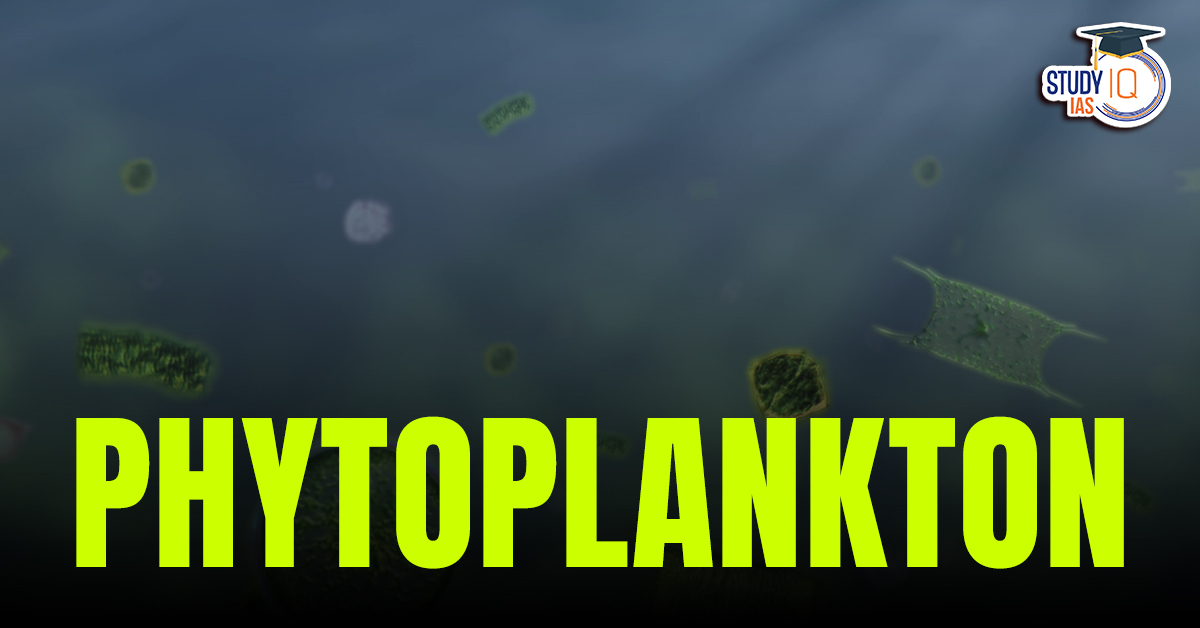Table of Contents
Context: According to a new study, iron released due to human activities enhances spring phytoplankton blooms as well as speeds up the rate at which nutrients are consumed.
About Phytoplankton
- Definition: Phytoplankton, or microalgae, are microscopic organisms that, like land plants, contain chlorophyll and rely on sunlight for photosynthesis.
- Habitat: They float near the ocean surface where sunlight can reach.
- Nutrient Requirements: They need inorganic nutrients like nitrates, phosphates, and sulfur to synthesise proteins, fats, and carbohydrates.
Types of Phytoplankton
- Dinoflagellates: Move using whip-like tails called flagella.
- Have complex protective shells.
- Diatoms: Possess rigid, interlocking shells made of a different material (silica).
- Do not have flagella; drift with ocean currents.
- Ecological Role:
- Serve as a primary food source for marine animals like shrimp, snails, and jellyfish.
- Help sustain balanced marine ecosystems.
- Harmful Algal Blooms (HABs): Occur when excess nutrients cause uncontrolled phytoplankton growth.
- Can release toxic substances harmful to fish, shellfish, birds, mammals, and humans.


 List of National Parks in India 2025, Ch...
List of National Parks in India 2025, Ch...
 Bonnet Macaques: Habitat, Features, Beha...
Bonnet Macaques: Habitat, Features, Beha...
 Periyar Tiger Reserve, Map, Flora, Fauna...
Periyar Tiger Reserve, Map, Flora, Fauna...

























